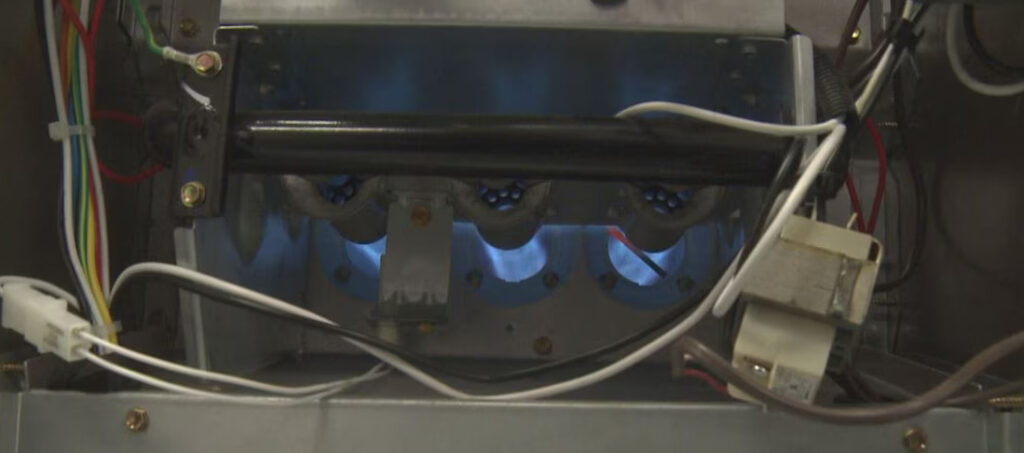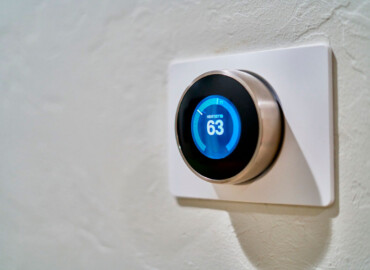How Much Electricity and Gas Does a Furnace Consume?
When it comes to making a furnace purchase, most of us consider how much it will cost on the usage bill. Is that the biggest concern holding you back from buying an electric furnace? Worry not! Fortunately, you have a great alternative in the form gas furnace. Broadly speaking, however, most homeowners in Canada rely on natural gas as an affordable heating option. If you, too, are planning to opt for a gas furnace, calculate beforehand how much electricity your furnace uses.
Owning an electric-based furnace means that it will consume more watts, whereas a gas furnace typically will not. However, power consumption can vary depending on the type of unit, furnace efficiency output/hourly operation, a specific configuration of the unit, and other elements such as a variable speed or single-phase motor.
Read the information below to learn about more elements of which options are the most reliable and efficient—an electric or gas-powered furnace, as well as how much electricity and gas the furnace consumes. Other than this, you will learn how to calculate furnace electricity consumption and learn the comparison between electricity and gas for heating.
Power consumption in watts for gas and electric furnaces
The fact cannot be ignored the operating cost of electric furnaces will be higher due to the higher average cost of electricity, even though these furnaces have lower installation costs and higher average efficiency.
Speaking of electric-powered furnaces, the electric usage of these furnaces ranges from 10 kW to 50 kW. If you opt for a 20killowatts electric furnace unit, you can use it daily for 2 hours. And to determine your daily usage, you will need to assess how many hours/per day you use it, the kwh power used, and the cost the electric company charges per kWh.
Gas-based furnaces, on the other side, have electric usage between 400 kW and 800 kW. Simply put, they can operate on just 120V circuits. Most gas furnace consumes approximately 75 watts for startup and 800 watts for consistent operation. They typically require a 15-amp circuit, though some may necessitate a 20-amp circuit. Unlike most space heaters, the power usage by a gas furnace is comparatively low, resulting in doesn’t make a difference to your power bills.
If heating your property is a necessity but also the biggest concern due to high power consumption, then choosing a gas furnace would be an excellent option. Regardless of utilizing natural gas to generate heat, these furnaces use electricity to power some components, including control mechanisms and flower fans.
Which option is the best? (Gas furnaces versus Electric furnaces)
When shopping for the best furnace, you may have different options to choose from across two types: a gas furnace and an electric furnace. At the same time, most of you might have wondered which is best. However, an electric furnace is the best and only alternative to a gas-powered unit. Differentiating between them helps to know that they have their own advantages and disadvantages, especially in terms of power usage.
To help you figure out how much electricity a gas-based furnace uses versus comparable electric furnaces, we’ll cover each aspect of these two units to provide accurate information for those trying to differentiate.
Most of you would be unaware that the cost of electric furnaces is almost half that of gas-based furnaces. The reason behind this is the high installation cost while handling a combustible element such as gas. Everything has to be properly sealed to prevent carbon monoxide, which usually requires some skill and equipment, which can cost you a lot.
What makes electric-powered furnaces different is the high amount of power these furnaces need to consume for working. Since electric systems use power ranges between 10 and 50 kW/h, making them less efficient and more expensive to use.
To conclude: Both gas furnaces and electric furnaces are the best options for keeping the property warm, but it depends if the temperature of your area goes down -10 in winter then we will suggest a gas furnace as in the long run it will help your house get warmer easily and also it will save money on a long run.
Choosing the right heating option can be hard for homeowners in Canada. But if you’re looking for an alternative to gas units, you can choose between a convection heater and an electric furnace.
But, if you’ve already made a mindset buying a gas furnace, you would need to understand how it works. Generally, gas furnaces operate through the interaction of their key components to heat a property in cycles.
These furnaces use smart technology designed to keep the environment at a warm, constant temperature. By knowing how furnaces operate, you can get a clear idea of how they consume electricity and how they use electricity.
The following parts play a vital role in operating a gas furnace:
- Burners or metal tubes – the component that brings the natural gas
- Heat exchanger – the part that warms the air inside the furnace unit
- The blower motors – the part that regulates the air to the heat exchanger and then supplies throughout your property
- The thermostat – One of the vital components, also called the control system, which communicates with the HVAC, enabling homeowners to set the temperature according to their space.
See how all of these components work at the same time to generate heat and then spread it throughout the property:
- Step1: In order to start working, the thermostat provides a sign of the temperature dropping in your internal space to the furnace
- Step2: Due to the first stage, the vale opening triggers, allowing gas to flow to the burner
- Step 3: The ignition of the burner heats the gas, as a result of which the air flowing through it is heated.
- Step 4: Eventually, the warm air leaves the ducts and enters your property. This will result in cold air being drawn into the unit, where this heating process will continue.
Operation of the gas furnace during a power cut
Every gas furnace has a specific need for electricity to run its internal components. During power cuts, these components run using a generator. In the lack of power supply, it is impossible to start your furnace as the smart thermostat requires a certain amount of electricity to be in touch with the furnace.
More than that, you need the power to boost up the electronic explosion to attain the whole gas furnace unit running. To operate a gas furnace on a generator, you must make sure that the generator you have supplies at least 2,500 watts or more. If your generator has less capacity than this number, it may not be enough to enable your system to perform.
People living in areas where power outage is a common problem usually have generators connected directly to their power panels. At that point, the units automatically hook up to the generator when there is a power cut, making them remarkably convenient. For safety, if the power goes out during a heating cycle, all of the electrically-powered internal parts of the furnace will stop working at some point.
Factors that affect the electricity cost of furnace operation
Though there are many elements that affect electricity usage and how much you ultimately pay for electricity costs related to its use. Even though a gas furnace uses less electricity than an electric furnace, these units do require some electricity to power them.
Now, let’s discuss the elements affecting overall energy cost:
- The kind of gas furnace system you own.
- The efficiency levels of the furnace.
- The exact temperature of the smart thermostat is set to.
- Hours of use per day it operates regularly.
What is the operating cost of a gas furnace?
The running cost of a gas furnace can vary based on a number of elements, such as the efficiency of the furnace, the price of natural gas on your property, and your heating needs. Broadly, gas furnaces are considered more cost-effective options when making a comparison between electric and gas furnaces.
As per approximation, a gas furnace can be worth anywhere from $500-$1500/yearly to use, based on the efficiency and size of the unit. Notably, the high-efficiency, brand-new models can help eliminate usage costs. Furthermore, regular maintenance, adequate insulation, and thermostat installation can further minimize operating costs and optimize the furnace’s efficiency.
Gas furnace energy efficiency: what it is?
To make sure your furnace is efficient, check how much energy it uses to operate. Efficiency refers to how well a gas furnace converts gas to heat, and the higher the percentage of its annual fuel use efficiency rating, the better the unit’s performance.
Bottom line
In a nutshell, how much gas and electricity a furnace consume depends on a number of elements. By learning about gas furnace efficiency and power consumption, you’ll be able to more accurately understand your energy expenditure. For more information on furnace power consumption, call our expert from Smile HVAC.




